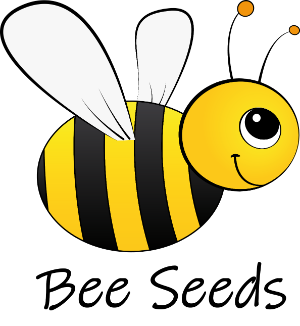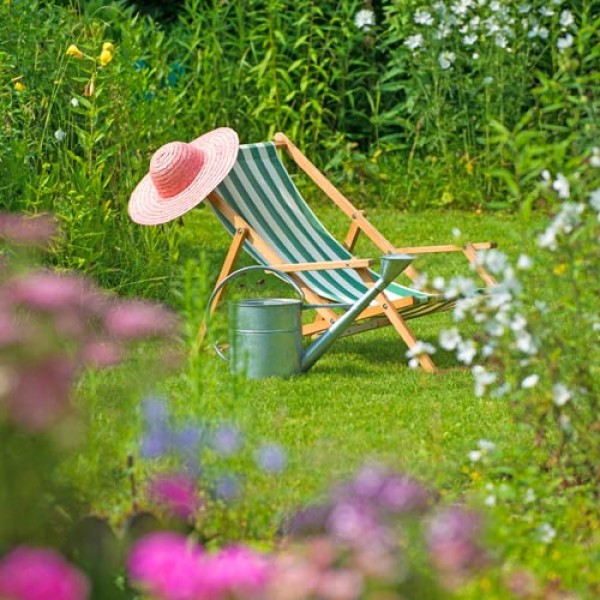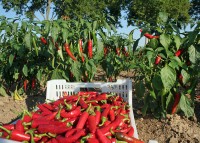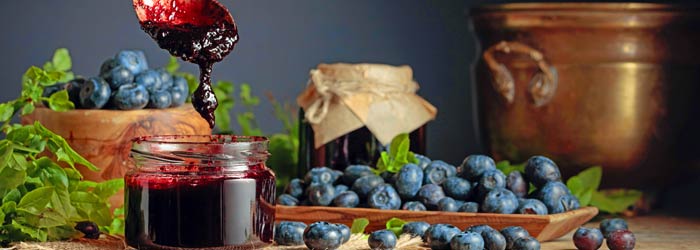The natural garden
The insect-friendly, natural garden for humans & animals:
Many gardens are more and more colourless, stony and missing the colourful diversity of plants.
Some cities and districts are now taking action and bans on gravel gardens are coming into force.
The world is becoming more and more overbuilt.
Precisely for this reason, we have to take care to design gardens close to nature in order to give micro-organisms, small mammals, insects, butterflies, bees and co. a habitat. This doesn`t mean that we are no longer allowed to use our garden, it means more that we can live in harmony with nature and watch animals inhabiting our wonderful gardens again.
Locally, communities are showing the way with nature beds, wild meadows, restricted areas for dogs & humans (so-called wildlife zones), with wetlands which are specially created or various parks with floral areas, great perennials and blooming zones.
Streams and small rivers are reopened again and rebuilt with various plants, stones and co. Close to nature, animal-friendly and a resting place for stressed people.
What defines a near-natural garden?
A nature-oriented garden is an optimal harmony between people and nature, because the home garden must also be an area of well-being for the gardener.
Here it is important to plan areas for sitting and playing for oneself or the children. Close to nature doesn`t mean: "Only for animals!"
Just a little thoughtfulness is needed, because we already know that pesticides and other sprays are the reason for the loss of biodiversity.
In a close-to-nature and insect-friendly garden, we therefore try to bring nature into harmony with gardening activities and work.
Whether through the use of organic fertiliser, less mowing, more plant beds, more watering places or the planting of mixed fruit. A close-to-nature garden here should be a delight for the eyes in spite of everything, because care is important here, too.
Environmental balance in the nature garden:
The soil in the semi-natural garden:
A healthy and well balanced soil is the base of every beautiful natural garden. The soil of the garden must be alive, because the micro-organisms and animals living in the soil make sure that organic waste is decomposed and thus valuable humus is created, so the soil is constantly prepared and fertilised in a natural way.
| Soil | Advantage | Disadvantage | Improbing Measures |
| with high clay content | - Stores water well - nutrients are stored sufficiently, so the soil is optimally nourished | - poor aeration of the soil - the soil warms up with great difficulty - waterlogging often occurs - Heavy cultivation of the soil. | - Green manuring can improve the soil quality - The soil should be dug up and possibly enriched with sand. |
| with high sand content | - the soil is always well aerated - the roots can easily penetrate the soil - the soil warms up quickly - surface water can quickly penetrate deeper layers of the soil - Easy to work. | - the water in the soil is not stored in the long term - the nutrients are quickly distributed over a wide area or washed out - the supply of nutrients is low. | - Supply or enrich with humus - Apply a layer of mulch to protect the soil from drying out. |
Fertilising in a natural garden:
Humus is the engine of the soil and is responsible for ensuring that plants are always supplied with sufficient nutrients. Humus is formed when organic matter such as old leaves, dead branches or flowers, animal remains, etc. decomposes.
If the soil is exhausted at some point, because more nutrients are drawn from the earth than are added again, it is time to add humus to the soil.
If the soil needs further fertilisation, you should use rotted manure or compost, which provides the soil with all the nutrients that the plants need for healthy growth.
| This belongs in the compost: | This does NOT belong in the compost: |
|
hedge trimmings, leaves, straw) | - Metal - Plastics - textiles - materials containing harmful substances - Peelings of citrus fruits - Coal ash - meat scraps - diseased plants |
The compost heap in a natural garden:
- Location should be chosen well, a wind-protected, semi-shaded place is best, distance to neighbour at least 0.5 m.
- The compost needs a minimum size of 1.00 - 1.20 m wide and 1.00 - 1.20 m high.
- The subsoil should not be compacted, so that soil organisms can migrate to it and decompose the waste optimally (it is best to loosen up the soil first).
- Always keep well moist, but never wet, because the compost develops a lot of heat inside.
-As a composting booster, you can add some compost that has already rotted.
If the compost is not enough as well, you can make your own natural liquid fertiliser:
- Fill a stoneware or plastic container halfway with fresh or dried herbs and pour water over it. As a general rule 1 kg of fresh herbs or 100-200 g of dried herbs to 10 l of water. Close the container and let it brew. If it no longer foams and has taken on a dark colour, it can be used as fertiliser.
-The following herbs should not be used: wormwood, lovage or mugwort, as these inhibit growth.
- The home-made fertiliser should be thinned before use (1 l herbal liquid manure to 10 - 20 l water), then fertilise early in the morning or in the evening hours in cloudy weather.
Which liquid manure for which Purpose?
- Nettle liquid manure to strengthen and invigorate the plants.
- Horsetail tea to strengthen the tissue of the plant, prevention of fungal diseases
- Camomile extract, to strengthen the plant
- Onion liquid manure, to prevent fungal diseases and strengthen the plants
- Comfrey liquid manure, for promoting tuber formation and strengthening the plant
- Dandelion liquid manure - for heavily consuming vegetables.
What should the natural garden look like? What should be integrated?
Perennial beds:
Perennial beds are always a food source for insects. F From the beginning of the year to the end of the year, flowers bloom here, insects always find food and in autumn and winter they find shelter in dead flower parts. In order to also have an attraction for the eye, one should resort to as many different flowers as possible, which result in an optimal colour harmony.
Lawn:
The lawn should not be a pure ornamental one but rather a meadow with clover and wildflowers. In this way, the lawn is not a useless area, but also a source of food for bees.
If you wish, you can incorporate flowering fields into the lawn in which flowers grow at different times of the year.
Deadwood Piles:
If you have to fell a tree or cut back larger trees, you can decide to build up various deadwood piles from the remains. These are a good refuge for mice, hedgehogs and other micro-organisms.
Water:
No matter in what form, but water should always find a place in a natural garden. Water is not only a habitat for frogs, dragonflies, newts and other aquatic animals, but also a drinking place for insects, birds and micro-mammals. Therefore, it should always be possible to integrate a pond, various drinking places, fountains or even a stream into the garden in order to create perfect harmony.
Compost:
In order to optimally recycle plant residues and waste, one should always plan for a compost. This should be at least 1 × 1 m in size and located in a semi-shady spot.
Dry Stone Wall:
An unplastered, stacked natural stone wall is an optimal habitat for toads, lizards and small wild animals. It can be the absolute highlight of any garden. When the sun shines on it, it quickly becomes warm and provides the optimal habitat for heat-loving stone plants.
Vegetables, herbs and fruit:
In an optimal natural garden, vegetables, herbs and fruit also find a place. Flowering fruit trees are an optimal source of food and falling fruit provides food for mice and other creatures such as earthworms and co.
The vegetable beds and fruit cultivation, on the other hand, are also a great enrichment for people, as they can harvest their daily food there.
What else I can build in the natural garden:
- Raised beds
- Herb snail
- a pond
- Rock garden areas
- Water areas
- Pond / fountain / stream
- Herb Garden
- Scattered fruit
- Stone wall
- Deadwood pile
- Insect hotels
Insect-friendly and natural garden plants:
| Sunny Beds | Semi-shady / shady Beds | Summer annuals | Biennial summer flowers | For the insect friendly flower bed | Early Bloomers | Climbing Plants |
|---|---|---|---|---|---|---|
| Alant | Columbine | Mallow | Bearded carnation | Yarrow | Crocus | Akebie |
| small flowering shrubs for the garden: | larger shrubs for the garden: | small trees for the garden: |
|---|---|---|
| Summer Lilac Ornamental quince Forsythia Witch hazel Hydrangea Weigelie | Fire maple Rock pear Cornelian cherry Blackthorn Black elderberry Snowball | Red thorn Ornamental apples Mountain ash Fruit trees |
| For the water garden | For the rock garden | ||
|---|---|---|---|
| Shore plants & marsh plants | Floating plants & aquatic plants | For the sunny location | For the semi-shady & shady location |
| Water Downey Meadow knotweed Meadowsweet Marsh forget-me-not Blood loosestrife Fluttering rush Marsh marigold Feverfew Frogspoon Arrowhead Marsh iris | Water lily Pondweed Water knotweed Frogbit Crayfish claw Eurasian water milfoil Marsh water star Rough hornwort Curly Pondweed | Scabiosa Carthusian carnation Rock flower Viper`s bugloss Hyssop Lavender Dost Catmint Marjoram Wall pepper Houseleek Dyer`s chamomile Phlox Gascona Thyme Gentian | Goosecress Stiff fern Fern Cymbal weed Mosses Günsel Bergenia Bogus berry |
Conclusion:
A natural garden combines beauty, practicality and has benefits for humans and animals. Through optimum and versatile use, all living creatures come together here and complement each other. On closer inspection, nature seems a whole lot Closer.























